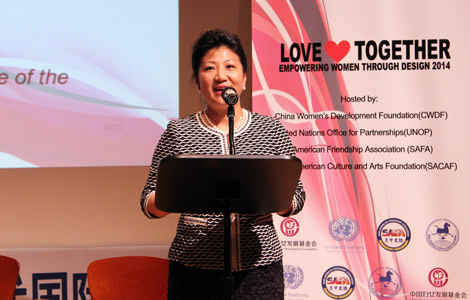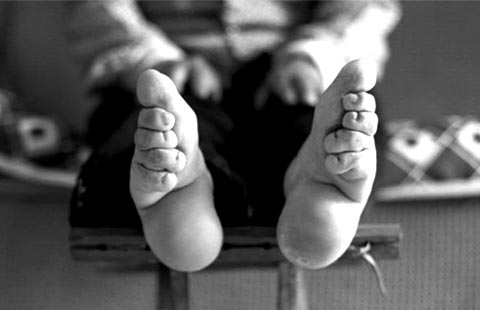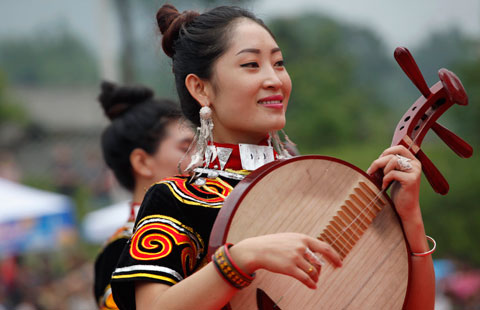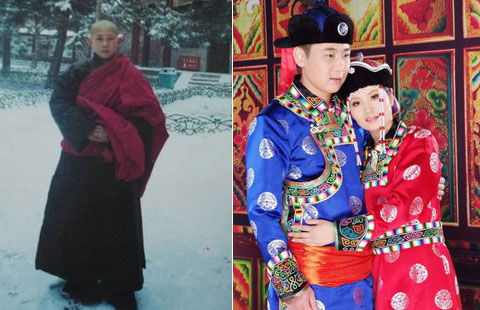Shaolin: Fists of fame
Updated: 2014-07-28 20:37
By Hou Liqiang and Qi Xin
|
||||||||
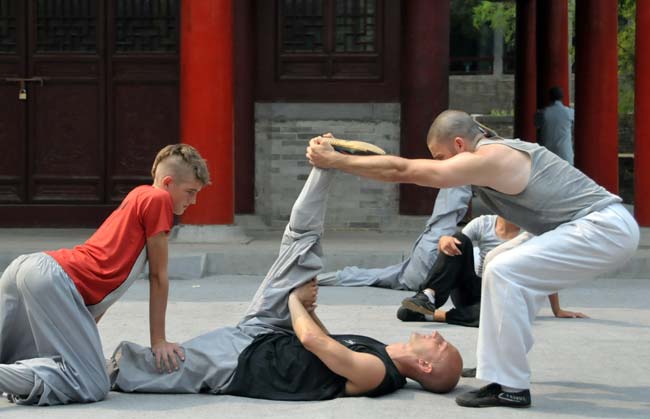 |
| Canadian Cale Klesko stretches and warms up his muscles with help from his friends before a kung fu class in the 1,500-year-old Shaolin Temple in Henan province. ZHANG LEILONG / CHINA DAILY |
Ancient temple riding a wave of global interest in its style of kung fu, report Hou Liqiang and Qi Xin in Dengfeng, Henan province.
|
Style By Hou Liqiang Shaolin kung fu is considered the largest school in Chinese martial arts. It contains hundreds of extant styles including barehanded and armed techniques, each boasting routines that promise to improve health as well as fighting prowess. Shaolin kung fu is not styled to be as aggressive as some of the other schools in China. Governed by moral codes that preach tolerance and mercy, Shaolin practitioners promote the use of their skills for self-defense. Disciples are encouraged to use the kung fu to improve their physical and mental fitness and to reduce aggression as much as possible. Shaolin Temple abbot Shi Yongxin once said that its kung fu “is for cultivating values according to Buddhist doctrine”. |
He had planned to join his friends in Wutaishan Mountain in Shanxi province, but decided to return to the renowned 1,500-year-old temple in Dengfeng city of Henan province.
"For me, learning kung fu in Shaolin is like lying on the beach and enjoying the sunshine," the 22-year-old Kojevnikoff said.
"Every time I return to Moscow from Shaolin, I feel rejuvenated."
The journalism major at Russian State Social University teaches Shaolin kung fu at a martial arts center in Moscow. He is still deciding between a career in journalism and martial arts. But he is sure he wants to continue teaching kung fu part time after he graduates.
Kojevnikoff is one of more than 2,000 foreigners who head to Shaolin Temple every year to learn kung fu. The number of visitors usually peaks during the summer vacation.
"Many come as a group. There are more than 20 groups every summer," said the temple's abbot, Shi Yongxin.
"A lot more come in twos or threes. There are such foreigners almost every day."
The abbot said many of the visitors also learn kung fu in the training schools nearby.
The visitors cite many reasons for going to Shaolin. Kojevnikoff said he heard about the temple and fell in love with martial arts after his parents sent him for classes when he was a child. His teacher later took him to Shaolin.
Canadian Cale Klesko said he goes to Shaolin to practice kung fu and Chinese culture, as he is dealing with an increasing number of Chinese companies in his work as an engineer in management consulting.
Kung fu also helps him keep "a balance between the body and the mind", the 30-year-old said.
Virginia Suen from Hong Kong said she learns kung fu to strengthen her body.
"I feel I am in good spirits after practicing kung fu," the 42-year-old assistant in an investment company said.
Many of the visitors also said they developed an interest in kung fu after watching movies about Shaolin as children. These include the 1982 movie, The Shaolin Temple, starring Jet Li.

 Chinese naval vessels participate in RIMPAC drill
Chinese naval vessels participate in RIMPAC drill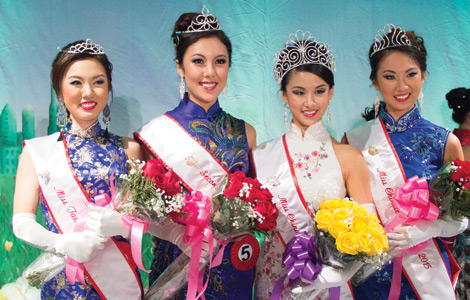
 Rose Li earns pageant title in Houston
Rose Li earns pageant title in Houston
 Harsher safety measures urged amid scandal
Harsher safety measures urged amid scandal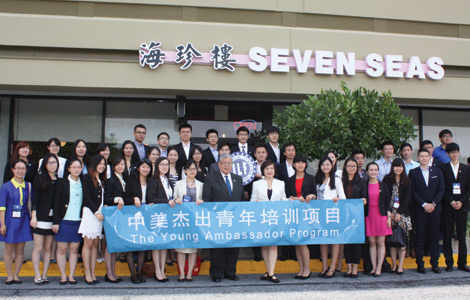
 Young ambassadors
Young ambassadors
 Wanxiang finds success in US
Wanxiang finds success in US
 The world in photos: July 21 - July 27
The world in photos: July 21 - July 27
 Twin artists 'Os Gemeos' hold exhibition in Sao Paulo
Twin artists 'Os Gemeos' hold exhibition in Sao Paulo-
 When did women begin to prefer slim look?
When did women begin to prefer slim look?
Most Viewed
Editor's Picks

|

|

|

|

|

|
Today's Top News
Glitch delays visas for US-bound students
A musical spoof of the Clinton years
Good times beckon for Latin American ties
Investment from China to boom
iPhones' access to data faces scrutiny
US sets China solar dumping margins
Chinese have a crush on Harvard?
Scandal-hit China food firm withdraws products
US Weekly

|

|

